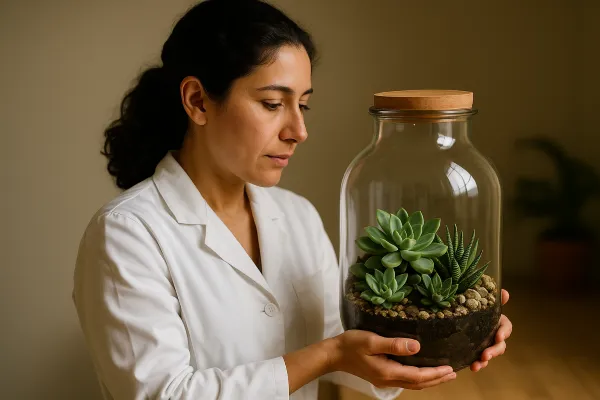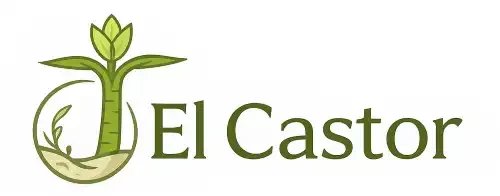Many plant enthusiasts wonder if they can keep succulents in a terrarium, drawn by the appeal of creating miniature desert landscapes under glass. Terrariums have experienced a remarkable resurgence in recent years, offering a captivating way to bring nature indoors while requiring minimal space. The desire to combine the beauty of succulents with the contained elegance of terrarium gardens is completely understandable.
Creating successful plant combinations often requires understanding the specific needs of different species. Succulents, with their fascinating forms and drought-tolerant nature, seem like natural candidates for these glass environments, yet their care requirements present unique considerations that deserve careful attention.
Our question of June is: Is labradorite safe to use in damp terrariums?
Can you keep succulents in a terrarium?
Yes, you can successfully keep succulents in terrariums, but only in open terrariums with proper drainage and air circulation. Succulents cannot survive in closed terrariums due to high humidity and poor air circulation, which causes root rot.
The key to success lies in understanding that succulents require fundamentally different conditions than traditional terrarium plants. While most people imagine terrariums as sealed glass environments, successful succulent terrariums must be open systems that allow for proper airflow and moisture management.

Understanding open vs. closed terrariums
Open terrariums are glass vessels with openings that allow air circulation and easy plant care access. These containers provide the drainage and ventilation that succulents absolutely require to thrive. Think shallow glass bowls, geometric terrariums with wide openings, or even converted fish tanks with the top removed.
Closed terrariums create humid environments with poor air circulation, making them unsuitable for succulents. Even large jars will be too humid for succulents, as airflow is essential and air must circulate around these plants. The condensation that builds up in sealed containers creates exactly the opposite environment that succulents need.
Essential requirements for succulent terrariums
Container Selection Choose glass containers with wide openings to ensure good air circulation. Avoid any containers that can be sealed or have very narrow openings. Select containers that complement your style—glass bowls, jars, and geometric terrariums work well.
Drainage System Line the bottom with fine gravel or rocks, then add about an inch of charcoal to absorb odors and toxins. This layer acts as a false drainage system, allowing excess water to settle away from plant roots. Without proper drainage, even drought-tolerant succulents will develop root rot in the enclosed environment.
Soil Requirements Use cactus soil that has been lightly pre-moistened, topped with sphagnum moss. Use pre-mixed succulent or cactus soil, or create your own by combining potting soil with sand and perlite in equal parts. The soil must drain quickly and never stay waterlogged.
Light and placement considerations
Succulents need plenty of bright, indirect light. Place your terrarium in a sunny spot, preferably by a window, but make sure the sun doesn’t reflect through the container glass or it can cook your plants. Terrarium glass can act as a magnifier and burn plants in direct sun, causing temperatures to rise quickly.
The glass walls of terrariums can concentrate sunlight and heat, creating sauna-like conditions that will stress or kill your succulents. Bright, indirect light provides the energy they need without the risk of overheating.
Watering techniques and timing
Water very sparingly when the soil has gone almost completely dry, using a watering can or spray bottle around the base of each plant. Most terrarium owners prefer using a mist bottle or turkey baster rather than pouring water, stopping once you see water running to the bottom layer.
Water typically every 2-4 weeks, depending on climate and environment. Most succulents tell you when it’s time to water by puckering slightly in their leaves. This visual cue is incredibly reliable—watch for leaves that appear slightly deflated or wrinkled.
Plant selection and arrangement
Choose slow-growing succulents to prevent overcrowding, prioritizing varieties that flourish in bright, indirect light. Select succulents that grow at a similar rate and require similar amounts of light and water, such as Echeveria, Haworthia, Crassula, Sempervivum, and Jade plants.
Choose succulents that vary in color, texture, and height to create visual interest, ensuring they have similar care needs. Arrange plants by removing them from pots and gently teasing apart roots, leaving space between plants for air circulation and growth.
Common problems and solutions
Overwatering Signs Mushy, brown, or black leaves indicate overwatering—remove these plants and replace them, reducing watering frequency. Root rot spreads quickly in the confined space of a terrarium, so acting fast prevents total loss.
Underwatering Indicators Shriveled leaves indicate it’s time to water. Brown leaves often indicate dehydration or too much sun. Adjust your watering schedule and consider relocating the terrarium if sun exposure seems excessive.
Air Circulation Issues If your terrarium has any lid or cover, open it occasionally to let air circulate, especially if you notice condensation on glass. Condensation indicates too much humidity, which can quickly become problematic for succulents.
Maintenance and long-term care
Keep glass clean to ensure maximum light penetration, wiping inside with a dry or slightly damp cloth to remove dust and condensation. Remove dead or dying leaves to keep the terrarium tidy and prevent decay from spreading to healthy plant parts.
Succulent terrarium care is essentially the same as care for succulents in pots—these plants thrive on neglect and need supplemental fertilizer only once per year. Trim plant tips if they start touching the glass and remove any dead vegetation promptly.
The beauty of a well-designed succulent terrarium lies in its low-maintenance nature. With proper care, succulent terrariums can last indefinitely, with longevity depending on the environment you provide including appropriate lighting, watering, and maintenance.
Conclusion
Last month, I created a stunning succulent terrarium using a wide glass bowl filled with carefully selected Echeveria, Haworthia, and small Jade plants. The key was ensuring excellent drainage with a thick gravel layer and using an open container that allowed perfect air circulation. Watching those tiny desert gems thrive in their glass home reminded me why I fell in love with terrarium building in the first place. This article represents the culmination of years of experimenting with different approaches to successfully combining the beauty of succulents with the elegance of terrarium design, proving that with the right knowledge, anyone can create these miniature ecosystems that bring lasting joy to any space.
El Castor is your exclusive terrarium guide.
